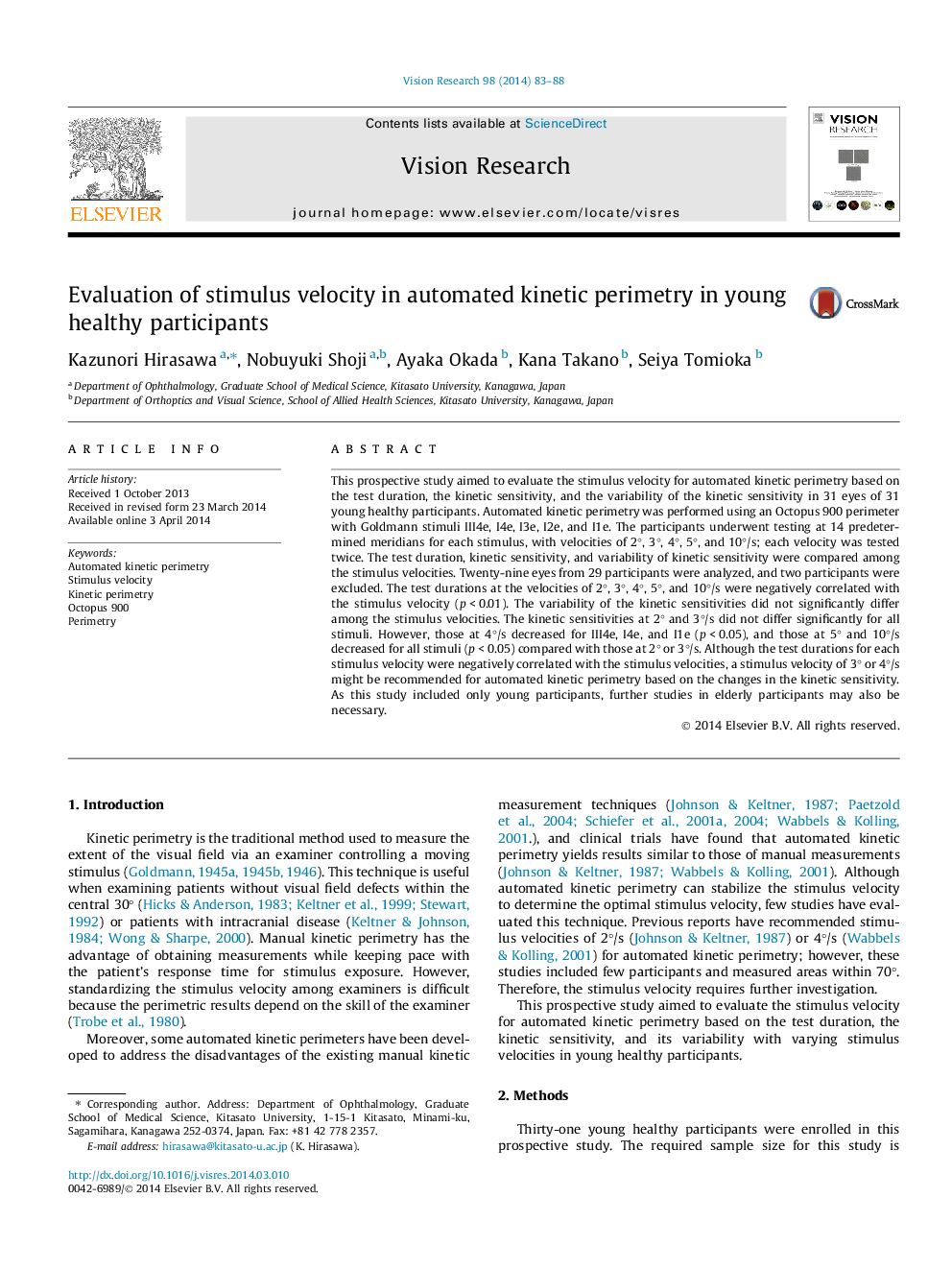| Article ID | Journal | Published Year | Pages | File Type |
|---|---|---|---|---|
| 6203515 | Vision Research | 2014 | 6 Pages |
â¢The optimal stimulus velocity for automated kinetic perimetry was evaluated.â¢The test duration was reduced for increasing stimulus velocities.â¢The variability of kinetic sensitivity among the stimulus velocities did not significantly differ.â¢The kinetic sensitivity decreased for stimuli traveling at rates faster than 4°/s.â¢A stimulus velocity of 3° or 4°/s is recommended for kinetic perimetry.
This prospective study aimed to evaluate the stimulus velocity for automated kinetic perimetry based on the test duration, the kinetic sensitivity, and the variability of the kinetic sensitivity in 31 eyes of 31 young healthy participants. Automated kinetic perimetry was performed using an Octopus 900 perimeter with Goldmann stimuli III4e, I4e, I3e, I2e, and I1e. The participants underwent testing at 14 predetermined meridians for each stimulus, with velocities of 2°, 3°, 4°, 5°, and 10°/s; each velocity was tested twice. The test duration, kinetic sensitivity, and variability of kinetic sensitivity were compared among the stimulus velocities. Twenty-nine eyes from 29 participants were analyzed, and two participants were excluded. The test durations at the velocities of 2°, 3°, 4°, 5°, and 10°/s were negatively correlated with the stimulus velocity (p < 0.01). The variability of the kinetic sensitivities did not significantly differ among the stimulus velocities. The kinetic sensitivities at 2° and 3°/s did not differ significantly for all stimuli. However, those at 4°/s decreased for III4e, I4e, and I1e (p < 0.05), and those at 5° and 10°/s decreased for all stimuli (p < 0.05) compared with those at 2° or 3°/s. Although the test durations for each stimulus velocity were negatively correlated with the stimulus velocities, a stimulus velocity of 3° or 4°/s might be recommended for automated kinetic perimetry based on the changes in the kinetic sensitivity. As this study included only young participants, further studies in elderly participants may also be necessary.
